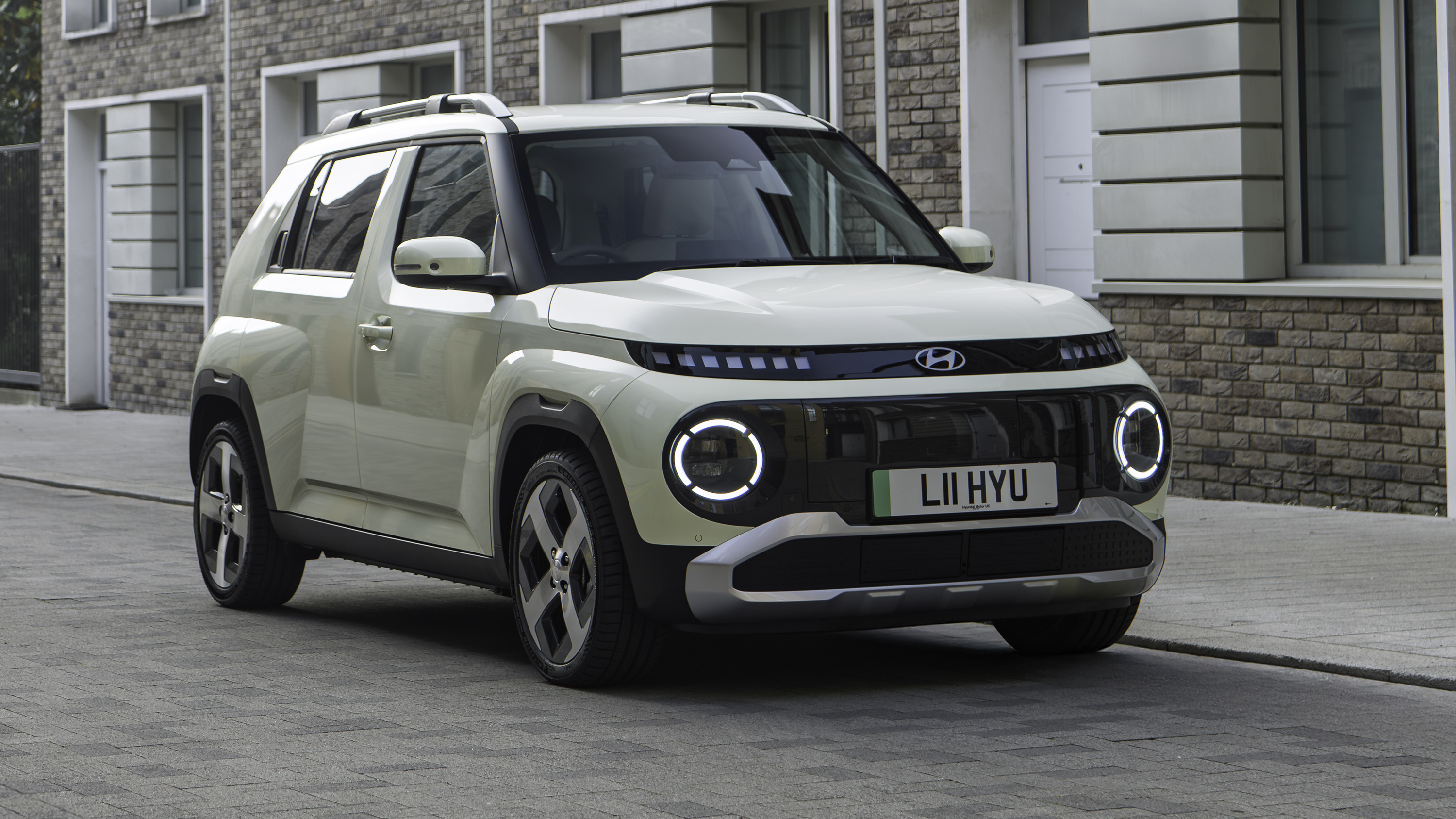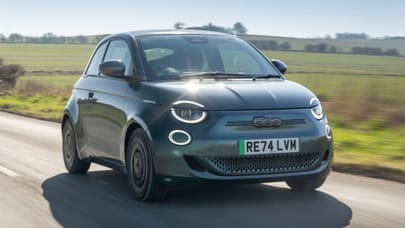Good stuff
Lots of equipment, refined, perky design, 02 is versatile
Bad stuff
Could be more fun, range/price ratio and charge speed not great, only four seats
Overview
What is it?
The Inster is Hyundai’s smallest electric car. It's been on sale in the UK since late 2024, but is actually the updated electric version of the slightly bigger Hyundai Casper, which launched in Korea three years prior with a 1.0-litre petrol engine.
Don't let its size mislead you. 'City' cars – petrol or electric – tend to be pretty stripped out, but the Inster is hard to categorise because it’s designed with charm, it's generously kitted out and is surprisingly versatile.
Trouble is, that raises its prices dangerously close to faster, wider, more grown-up cars including the Renault 5, Mini Cooper Electric, Fiat 500e and Peugeot e-208.
The Inster leverages the Koreans' electric expertise, acting very much like a trickled-down version of the Kona. You can have it with one of two powertrains: the base version has a 42kWh battery giving the motor 97bhp and a WLTP range of 203 miles. Assume 150-odd real world, unless you're confined to suburban speeds.
The longer-range (229 miles of WLTP on diddy, 15-inch wheels; 223 miles on 17s) has a 49kWh battery that runs at a slightly higher voltage so it can juice the motor to 115bhp. Got that?
Prices start at £23,495 for the small batteried one to £26,745 for the bigger capacity and higher equipment level. All of them have full driver assist and a heat pump.
Let's talk about the design.
Like the best small cars, the Inster is a cheery looker without toppling into cartoonish cuteness. The front circular running lights give it a distinctive, animated face. Hyundai has been liberal with its characteristic pixel lighting for the indicators and rear lights. Disciplined panelwork gives it a visual strength. You might be seeing a bit of Suzuki Ignis.
Hyundai talks of it as a crossover. As Citroen does with the e-C3. Purleese. It's just a bit raised up, and has some perimeter plastic around the body. That cladding's largely ornamental, not useful: the door panels are still unprotected if anyone opened their car door or bounced a shopping trolley on you. There’s a chunkier-looking version called the Inster Cross, but that’s still just two-wheel drive.
And inside?
Let's start with the colours, because you just can't avoid them. The check seats are an uncontroversial and cheery way of lifting the mood, but they’ll make your eyes go funny if you stare at them for too long. The colourful cabin plastics might split opinion, but we’re pleased to see Hyundai trying out something a bit different – like the Honda e did, only cheaper to buy and with a longer range.
There are sliding rear seats in the upper trim 02 model (all Insters are strictly four-seaters, incidentally) – slide back and you've got what is an amazing amount of legroom for a small car. But then a tiny boot. At the other extreme you can fold them and the front passenger seat too. Handy if you're a solo double-bassist.
The Inster doesn't feel like a cheap car. The dash has two high-resolution screens and loads of physical switches. It's much the same setup that appears almost the whole way up Hyundai's range. We did find the infotainment occasionally laggy, especially on startup, but you can read more about the inside of the car in the Interior tab of this review.
How does it drive?
Comfortably. It's softly suspended and absorbs bumps with a well-oiled gait. Urban potholes and speed bumps won't give you any angst.
Of course this means it rolls a fair bit in corners, but as it's not too heavy you feel you can chuck it around (we wouldn't recommend doing it too much though). The small battery one is just 1,300kg (which is to say 1,300,000 Inster-grammes). But as the steering's rather numb it doesn't really want to play games. It wants you to relax.
Performance is also, well, relaxing. It absorbs more than 10 seconds in getting to 62mph. Still, the pedal calibration is fine for nipping briskly but smoothly away from city junctions when a gap appears.
Our choice from the range
What's the verdict?
If it's going to sell against the Renault 5, Fiat 500e and Mini, the Inster needs to look distinctive. And it passes that hurdle. Its design gives it a presence beyond its physical size, undermined only by the base version's tiny 15-inch wheels.
The cabin works well, blending grown-up, rational instruments and controls with cheerful upholstery. Even though it's small and can never carry five, the 02 version's sliding rear seats do improve versatility.
Hyundai's electric expertise is well proven, so we'd expect reliability and efficiency to be pretty much a given.
So even though it sits oddly among the size classes and is much more expensive than other baby cars, don't get too hung up. It feels like something bigger.
The Rivals
Trending this week
- Car Review
Bentley Brooklands
- Car Review
Ferrari Amalfi








